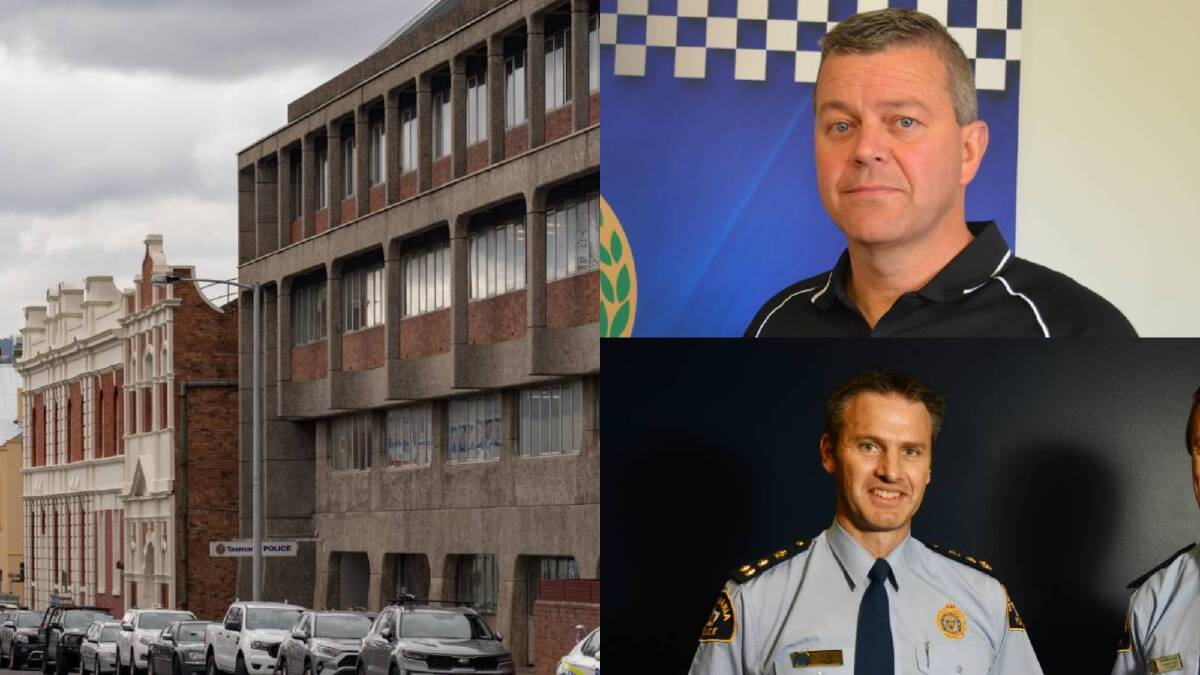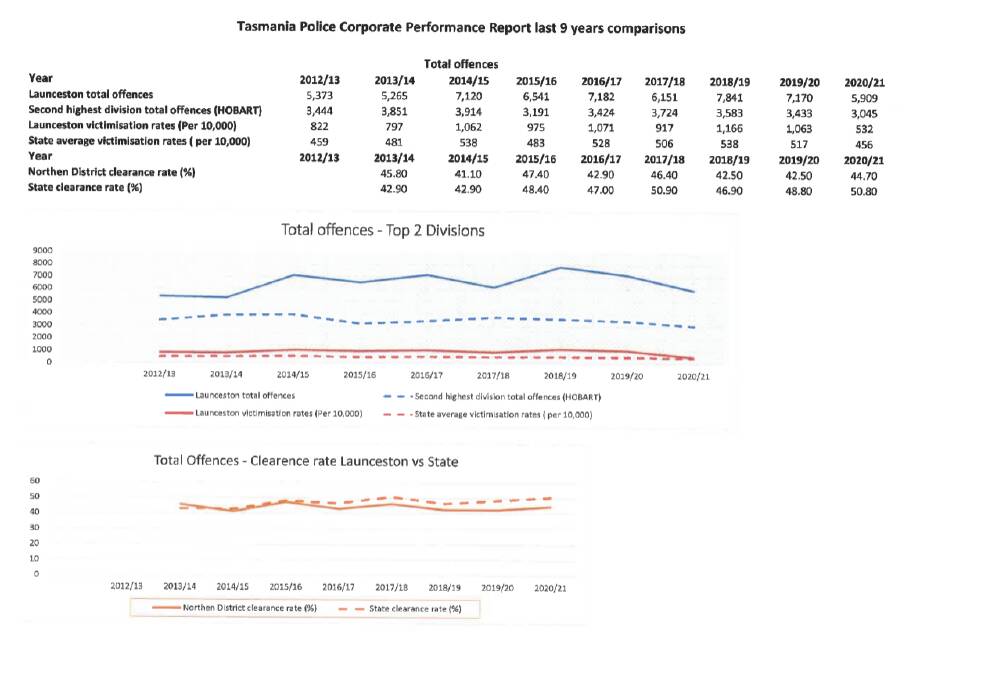
High relative rates of crime in Launceston are not news, neither are calls to address them, but approaching them systemically may be the solution, according to the police union.
Subscribe now for unlimited access.
$0/
(min cost $0)
or signup to continue reading
The Police Association of Tasmania says that can be done by guaranteeing specialist officers be posted to Launceston to target career criminals and criminal networks.
But Tasmania Police says the final call on where police resources are distributed is up to the Commissioner, and that call will come only after a "future workforce planning analysis".
Association president Colin Riley said several years of Launceston posting the highest rates of crime and victimisation rates in Tasmania was because of an ongoing method of applying a Band-Aid to a haemorrhage, and not applying a specific approach to the division.
Victimisation rates indicate the amount of crime perpetrated for every 10,000 members of the community. The rates were once part of Department performance documents, but were removed following the release of the 2019-20 Corporate Performance Report.

At that time Launceston recorded a state-high victimisation rate of 1063, topping second-ranked Hobart at 639 and more than double the state average.
Although, Tasmania Police Assistant Commissioner Jonathan Higgins said the rates were removed due to a change to divisional boundaries meaning there was no longer "directly comparable population data".
Assistant Commissioner Higgins said crime figures from Launceston "show that over the last three years, total offences in Launceston have fallen by 25 per cent, and serious crime has dropped by 19 per cent over the last five years."
Mr Riley said the only way to address the haemorrhage was for the Police, Fire, Emergency Management Department to follow through on a commitment of 27 specialist police officers to be installed at the Launceston precinct.
"The police staffing across the state has pretty much been consistent for many, many years and I'm talking nearly decades now there hasn't been any substantial review or alterations to the staffing levels," he said.
"When you look at the crime rate in Launceston it's reflective that we've had a consistent level of staff for the same amount of time, and that amount of staff haven't been able to resolve the issue.
It's not a district problem, it's not a Launceston problem, it's a department problem that needs better resourcing to actually bring it further under control.
- Police Association of Tasmania president Colin Riley
Mr Riley said he had received correspondence from Premier Peter Gutwein stating 27 specialised officers would be provided to Launceston following an election promise, but had concern the recruitment would not be reflected when finalised.
Assistant Commissioner Higgins said any finalisation would only come after the workforce analysis.
"Widespread consultation and engagement with our police members is underway, and will continue throughout November," he said.
"This will contribute to an evidence-based rationale for the allocation of these additional police officers."
Ninety-five police offers are allocated to Launceston, the highest number of any 24-hour operational police station. The Hobart Division, by way of comparison, had 70 allocated.
According to the 2020-21 victimisation rates, that would equate to about one officer for every 710 people in the Launceston Division and one officer for every 767 people in the Hobart Division.
The 27 hoped for officers, if approved in accordance with a Police Association pitch, would fill 11 detective roles, five of who targeted serious organised crime.
Mr Riley said the high victimisation rates could be attributed to repeat offenders and pointed to the recent firearms taskforce undertaken by officers from Launceston was a prime example of what the district could achieve given what he said was appropriate resources.
That taskforce saw, as of October 12 according to Tasmania Police Assistant Commissioner Adrian Bodnar, more than 60 firearms seized, 60 people charged with firearms related offences and 266 charges in total.
Assistant Commissioner Higgins said organised criminal networks in Launceston had been targeted as part of Operation Coat, an August directive aimed at investigating criminal and drug offending.
Our journalists work hard to provide local, up-to-date news to the community. This is how you can continue to access our trusted content:
- Bookmark www.examiner.com.au
- Make sure you are signed up for our breaking and regular headlines newsletters
- Follow us on Twitter: @examineronline
- Follow us on Instagram: @examineronline
- Follow us on Google News: The Examiner



